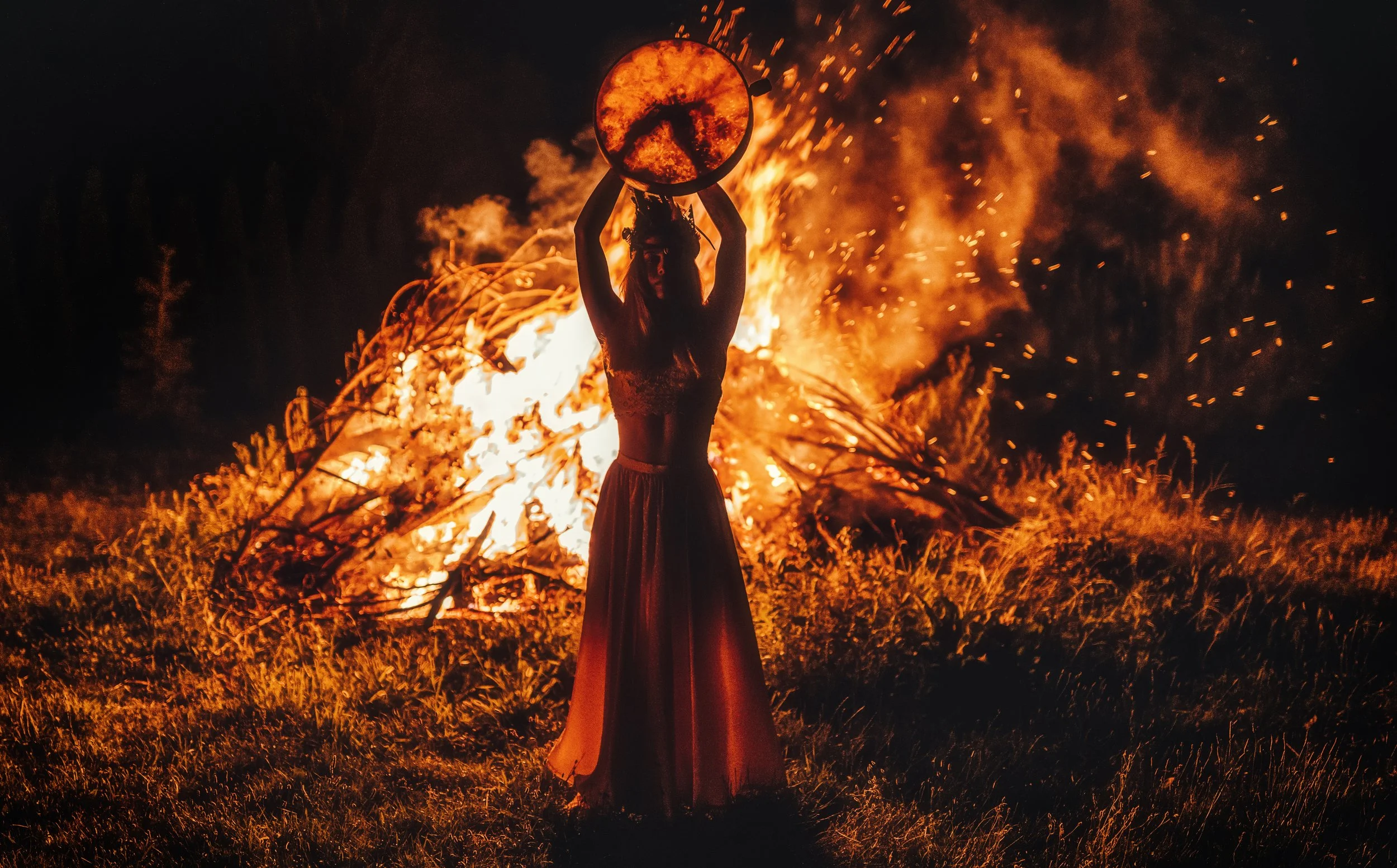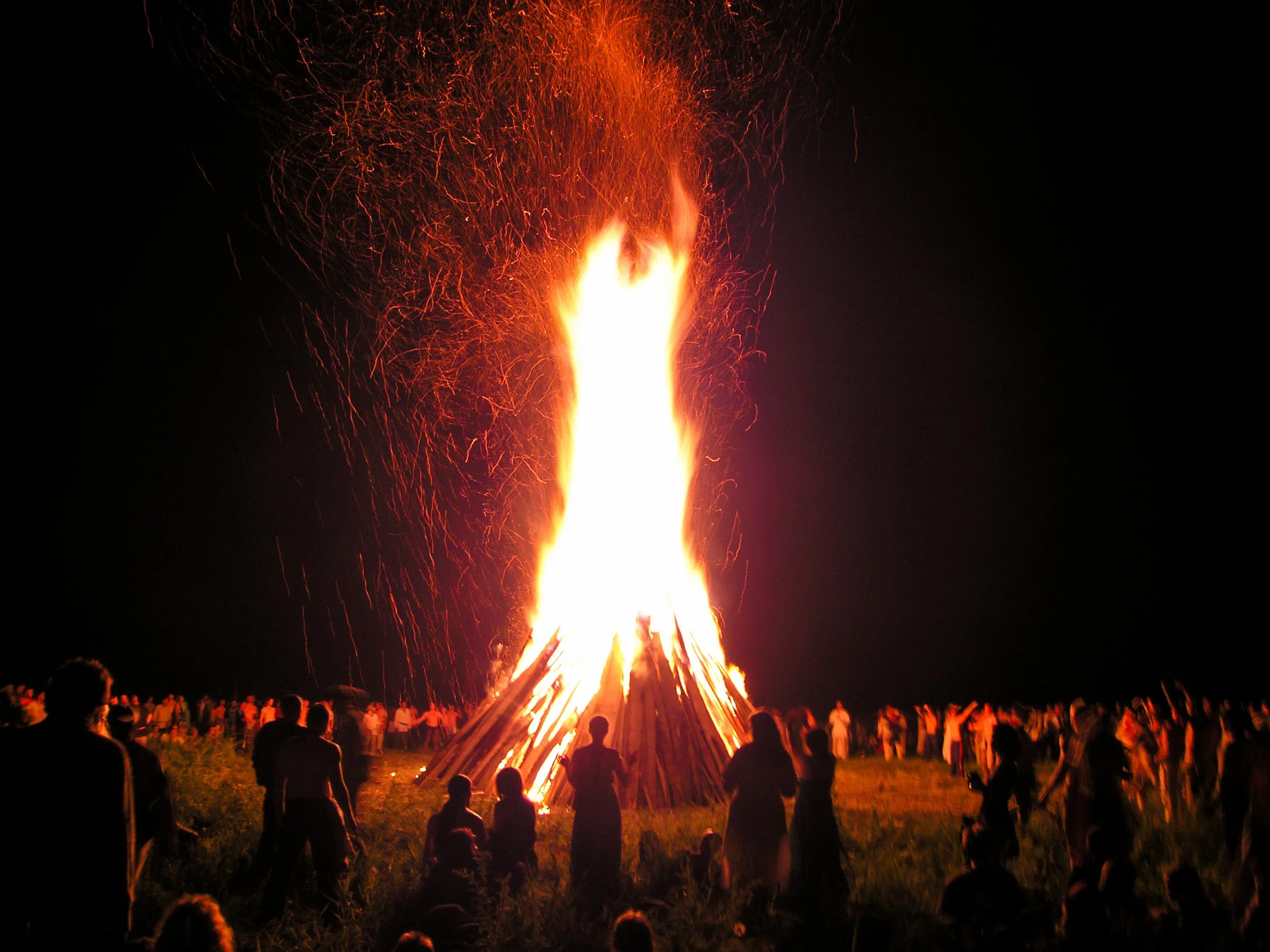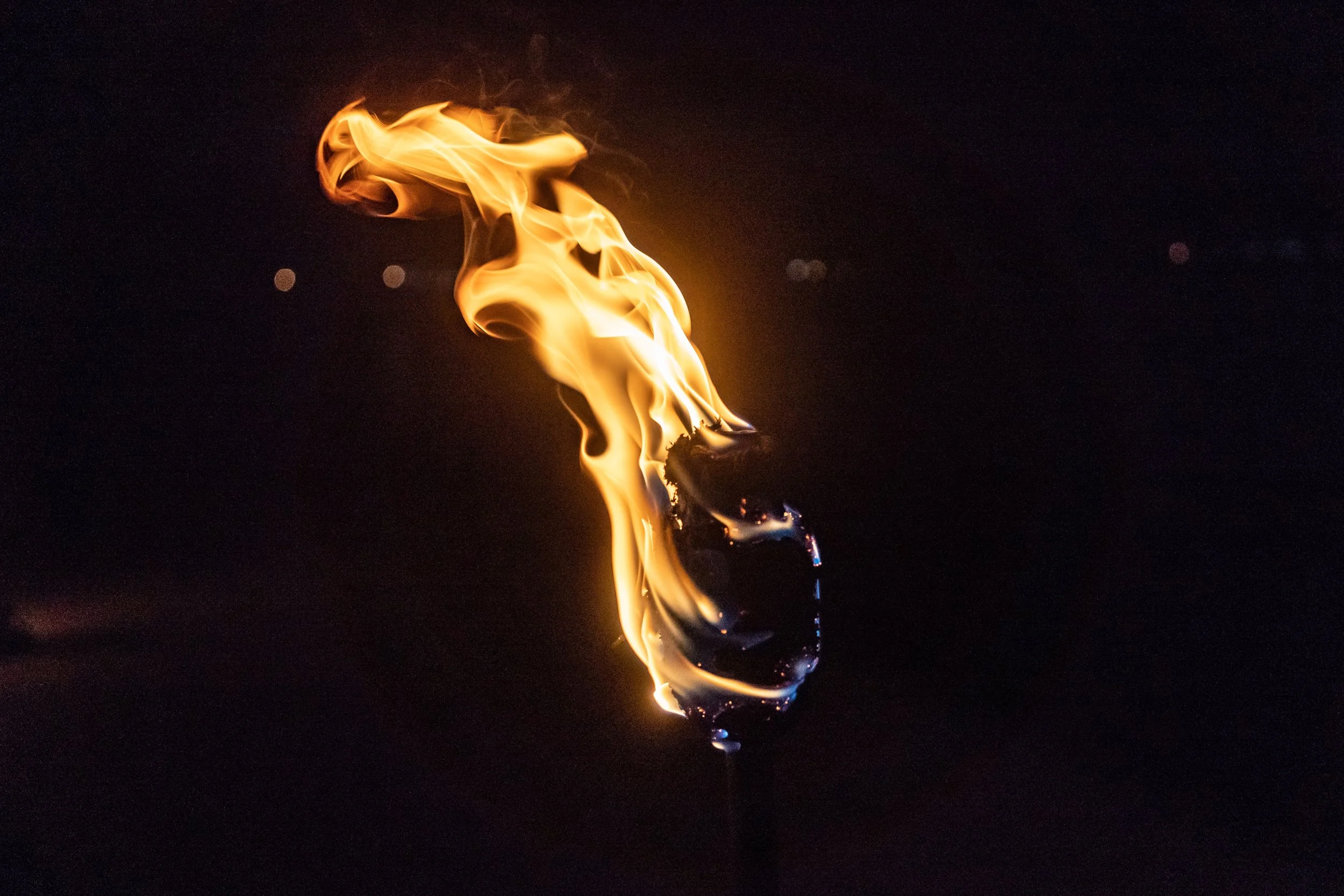Day 5: From the Ashes of Tlachtga — The Fires That Rekindled the Year
(Day 5 in the Samhain Series)
The Hill of Fire
Imagine it: the chill of an Irish autumn night, mist rolling low over the grasslands and the sun sinks below the horizon as hundreds of figures gather on a hilltop.
Drums pulse in time with the heartbeat of the earth. Sparks rise into the night air as the first sacred flames roar to life.
This is Tlachtga — the Hill of Fire — where the old year died, and the new one was born.
Every flicker of flame was more than light against darkness. It was prayer, remembrance, and renewal all at once. From here, the first Samhain fires of Ireland burned, sending their glow across the land to Tara, the seat of kings.
The Hill and the Woman: Tlachtga Herself
Tlachtga (pronounced CLOCH-tuh) was no ordinary woman. She was the daughter of Mug Ruith, a legendary druid said to wield solar magic, flight, and the fiery chariot known as the Roth Ramach — the “Wheel of Fire.”
The Book of Leinster and later folklore tell that Tlachtga traveled across the world with her father, studying the secrets of Babylon, Persia, and beyond.
But her tale turned tragic. In one version, she was assaulted by the three sons of Simon Magus — a figure from early Christian legend.
She returned home to Ireland heavy with child, giving birth to triplets upon the hill that now bears her name. There, she died in childbirth.
The hill became her resting place — and a site of immense spiritual power.
Her three sons were said to have founded druidic lineages, their legacy echoing the triple goddess archetype and the cyclical nature of life, death, and rebirth — the very heartbeat of Samhain itself.
From that moment on, the hill became a portal between worlds — womb and tomb, death and birth, earth and flame.
The Geography of Power
Tlachtga’s hill (modern Hill of Ward, near Athboy, County Meath) lies in direct alignment with Tara, the royal seat of Ireland’s High Kings. This was no accident — it was chosen with precision.
When the great fire was lit on Tlachtga during Samhain, its glow could be seen from Tara. The two hills were in conversation — a visual and spiritual link between the sacred and the sovereign.
In this way, Tlachtga was more than landscape. She was a transmitter — a cosmic hearth relighting the kingdom each year. Her hill was both the womb that birthed and the heart that burned, joining land, myth, and rulership through sacred flame.
The Fire Goddess Connection
Some scholars, including Dr. Ronald Hutton and Miranda Green, believe Tlachtga may once have been a fire or earth goddess later woven into history as a mortal woman.
Her associations with childbirth, transformation, and sacred fire place her alongside Brigid, the goddess of poetry, craft, and renewal.
When the Samhain fires were kindled on her hill, it was more than a ritual — it was a reenactment of her myth. Death giving way to new life, just as the old year dies at Samhain so that the new one may rise.
A Portal Between Worlds
Tlachtga’s death in childbirth made her a living symbol of the threshold between life and death — the very boundary that Samhain honors.
Her hill became the perfect place for the fires that guided both the living and the dead through the turning of the year.
Archaeological evidence suggests that rituals involving sacrifice and fire took place on this site as far back as the Iron Age — ceremonies of purification, fertility, and renewal that echoed her myth.
Why Tlachtga Was Chosen
Tlachtga’s site was:
Mythically powerful — burial place of a druidess tied to fire and transformation.
Geographically aligned — a beacon to Tara, symbolizing communication between realms.
Spiritually liminal — a site of death and rebirth, echoing the essence of Samhain.
The fires lit there were not mere seasonal observances; they were acts of devotion — offerings to the goddess and the cosmic rhythm she embodied.
The First Samhain Fires
According to The Dindshenchas, a medieval collection of place-name lore, no fire in Ireland could be lit before the fire of Tlachtga was kindled.
From that blaze, torches were carried to Tara, then across Ireland to rekindle every hearth. It was a spiritual renewal and a political unification — a shared flame binding the tribes under the turning wheel of the year.
Fire and the Sun: An Astronomical Rite
The hill of Tlachtga aligns closely with the sunset at Samhain, suggesting its builders worked with celestial intention.
Many believe the great fire was kindled as the sun sank below the horizon on Samhain Eve — the symbolic death of the year’s light, reborn through sacred flame.
Death, Purification, and Renewal
Across Ireland, household fires were extinguished — a powerful act symbolizing the death of the sun and the closing of the year.
From the sacred blaze at Tlachtga, new fire was carried home to each hearth.
Cattle and people passed between twin fires for protection and blessing, cleansing themselves in the purifying power of flame.
The fire was not just heat and light — it was mythic substance, the living presence of renewal.
A Ritual for You
As the ancients did, you too can honor this turning.
Light a candle and take a deep breath. Let your mind drift into that space between seasons. Then ask yourself:
What in my life is ending this season — what story, habit, or role?
What embers remain that I carry from the old year?
What flame am I ready to rekindle — what dream or direction calls me next?
Simple Fire Rite
Extinguish your candle. Wait a moment in the darkness. Then relight it — or imagine you’re lighting it from the great fire on Tlachtga’s hill.
Say aloud:
“From the fire of renewal, I kindle the year ahead.
What ends is honored; what begins is welcomed.”
Stand in the glow. Feel the warmth of your own rebirth.
The Fires Reborn
In the year 2000, Irish pagans, historians, and locals rekindled the fires at Tlachtga for the first time in centuries. Each year since, people have gathered to drum, chant, and light the sacred flame anew.
What began as ancient myth now lives again — a modern act of remembrance and rebirth.
Some say if you stand on the hill at midnight on Samhain night, you can still hear the whispers of old chants on the wind.
And perhaps, just perhaps, a flicker of the goddess’s flame still dances there — reminding us that from every ending, something bright is always reborn.
Closing Reflection
The fire of Tlachtga is not just a story of ancient Ireland — it’s a story of us.
Of the ways we rekindle our spirits when life burns low. Of how we pass our own light forward through darkness.
This Samhain, may you find your way back to your inner hearth — and remember that every spark, no matter how small, has the power to rekindle the year.




